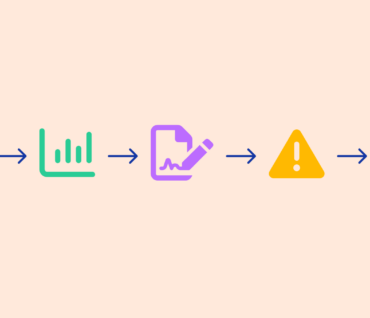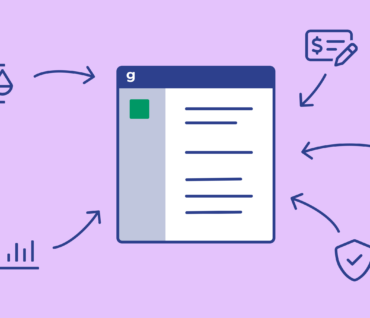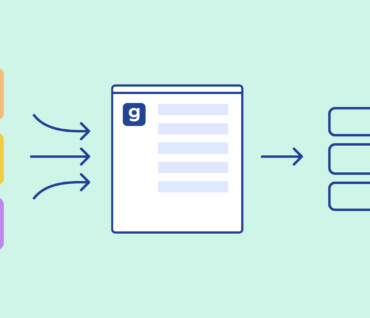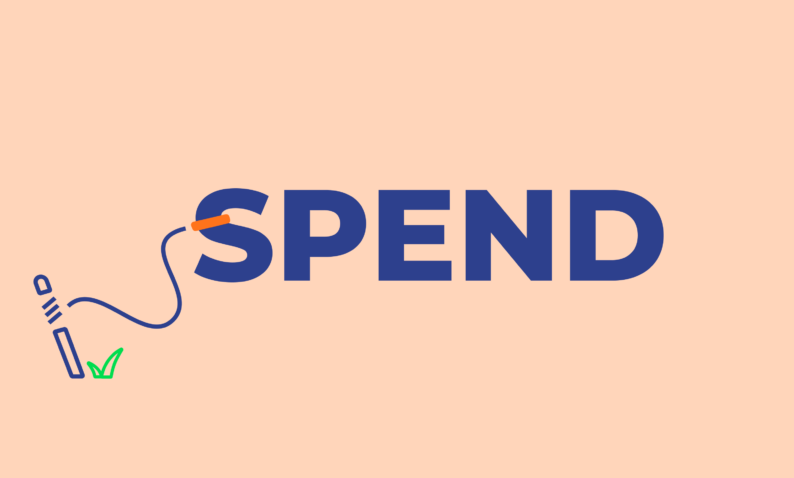
Get Started
Graphite's supplier management tool helps you onboard faster, cut time on risk reviews and streamline supplier validations. Save time and money.
October 5 2022
3 Tips to Grow Your Spend Under Management with Graphite
Growing your spend under management is essential for any procurement team. When you have a higher percentage of transactions coming through your department, you can align closely with company goals, saving your business time and money.
So how can you increase your managed spend? Efficiency is key. The rest of your employees will either see your procurement processes as a help or a hindrance. But with streamlined and strategic procurement process, both your fellow employees and potential suppliers will come to see your team as a facilitator rather than a bottleneck.
First, a few definitions:
What Is the Difference Between Direct and Indirect Procurement?
These are two fundamental categories in procurement management, and each has a distinct impact on your managed spend.
Direct Procurement refers to goods or services purchased which are directly incorporated into the products manufactured by a company. These items are part of the production process and contribute to the end product. Examples include raw materials for a manufacturing plant, components for electronic devices, or ingredients for a food processing company. Managing these goods and services effectively is crucial because these purchases directly affect a company’s core business operations and product quality.
Indirect Procurement, on the other hand, involves purchasing goods and services that are necessary for day-to-day operations but are not part of the final product. These can include office equipment and office supplies, maintenance and repair operations (MRO), IT services, marketing materials, and facility management. While these indirect purchases do not contribute directly to creating a product, such as raw materials, they are essential for maintaining the business infrastructure and enabling smooth operations.
Spend under management in the context of these two types of procurement involves the portion of a company’s total procurement budget that is actively managed and strategically controlled by the procurement team.
For direct procurement, effective spend management means ensuring that the purchases that directly contribute to creating a product are made at optimal prices and quality and come from reliable suppliers. This directly impacts the cost of goods sold (COGS) and, ultimately, the company’s profitability.
In indirect procurement, managing spend effectively helps control operating costs. Although these purchases don’t affect the product directly, inefficient management of indirect spend can lead to unnecessary costs and reduced operational efficiency.
In summary, both direct and indirect procurement are crucial for a business model’s overall financial health. Managing spend in both categories aims to optimize costs, ensure quality, and maintain reliable supply chains. Effective management of both types of spend ensures that a company can produce high-quality products profitably while maintaining smooth internal operations.
What Is Intake?
Intake is the procurement process of collecting and executing on a new purchase request. This may be as complicated as onboarding vendors, or as straightforward as buying a laptop from a preferred supplier that you’ve worked with in the past.
What Is Spend Under Management?
Also known as managed spend, spend under management represents the percentage of annual supplier spend that is managed by your team. This metric is one of the most common key performance indicators for procurement teams that aim to show procurement performance and grow their impact across the organization.
Keep reading to learn how to calculate this spend, the benefits, and three ways that you can use Graphite to increase your managed spend and improve your own procurement cycle performance.
How Do You Calculate Spend Under Management?
Calculating spend under management is a key metric for procurement leaders looking to gauge the effectiveness of their procurement strategy. Here’s how:
Imagine your organization’s total spend as a pie. Not all slices of this pie are under your direct control. Some spending happens outside of the formal procurement process — think of those impromptu expenses or purchases that bypass the standard procedures. What we’re interested in is the portion of the pie that you, as a procurement leader, have a direct influence over. This is your ‘managed spend.’
To calculate this, start by taking the total spend of your organization. This is your whole pie. From this, subtract any expenses that fall outside of your procurement processes — these are your exclusions. What you’re left with is the total spend that goes through procurement.
Now, focus on the portion of spend that you actively manage. This includes all the spending that you have sourced or controlled directly through your procurement strategies and negotiations with multiple suppliers. This is your ‘actively sourced/controlled spend.’
To calculate your managed spend, simply divide the total amount actively sourced or controlled in your supply chain by the overall expenditure, after excluding any spend that falls outside your processes.
The formula looks like this:
Managed Spend = (Actively Sourced/Controlled Spend) / (Total Spend – Exclusions)
The result is a percentage that represents how much of your organization’s total spend is being actively managed by procurement professionals. This crucial figure tells you how effective your procurement strategies are. The higher the percentage, the more control you have over your organization’s spend, and that usually translates into better cost savings, improved efficiency and supplier quality, and stronger relationships with suppliers.
Understanding and improving your managed spend can help you gain greater visibility and control over your expenditures and ensure that your procurement strategies are aligned with your organization’s broader financial and business objectives. Remember, the goal isn’t just to spend less, but to spend smarter.
What Are the Benefits of Spend Management in Procurement?
Enhancing spend management in procurement leads to better budgeting and budget control, which are crucial for several reasons. For one, this helps you negotiate better deals and align purchasing decisions more closely with business objectives.
Additionally, a well-managed spend fosters stronger supplier relationships. By understanding and maintaining supplier relationships and controlling where and how money is spent, your team can engage in more meaningful negotiations, leading to mutually beneficial preferred supplier contracts. This approach not only improves terms and costs but also strengthens the overall supplier relationship.
Furthermore, implementing a strategic approach to managed spend boosts compliance. It ensures that purchasing aligns with your organization’s policies and external regulations. This increased compliance reduces risk and enhances the efficiency of your overall procurement process too, making it a vital aspect of your overall procurement strategy.
In essence, focusing on managed spend not only helps cut costs and maximize value from purchases but also is pivotal in building a robust and compliant procurement function.
Here are three tips to help you grow your managed spend:
1. Standardize Your Intake Procurement Process
Intake is the process through which an employee at your business makes a request to purchase something–whether a physical product, consulting services, or anything else deemed necessary for business. As your organization grows, intake is likely to become more complicated.
By establishing fundamental requirements for a standardized procurement process, you can ensure other business units at your organization know what to expect and can act accordingly. When employees understand exactly what needs to happen in a guided workflow, purchasing becomes transparent and fair for everyone. You can then identify gaps in your purchase process and any areas for potential improvements.
Unfortunately, for too many companies, intake is often a slow and inefficient procurement process, causing purchase requests to take far longer than seems appropriate. When this kind of bottleneck occurs, the reputation of procurement suffers, and more employees will take purchasing power into their own hands without going through your team first.
But, while common, it doesn’t have to be that way. With Graphite, your procurement team is empowered to design your own guided intake process that fits your business needs and specific purchasing processes.
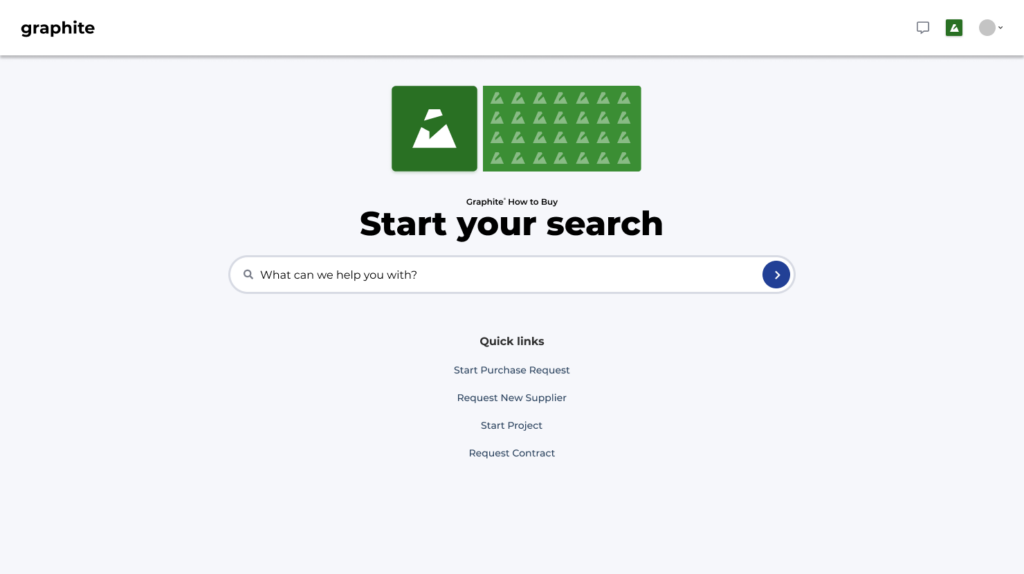
Graphite allows you to decide how your buying process will flow depending on variables such as spend tiers, purchase category, geography, and more.
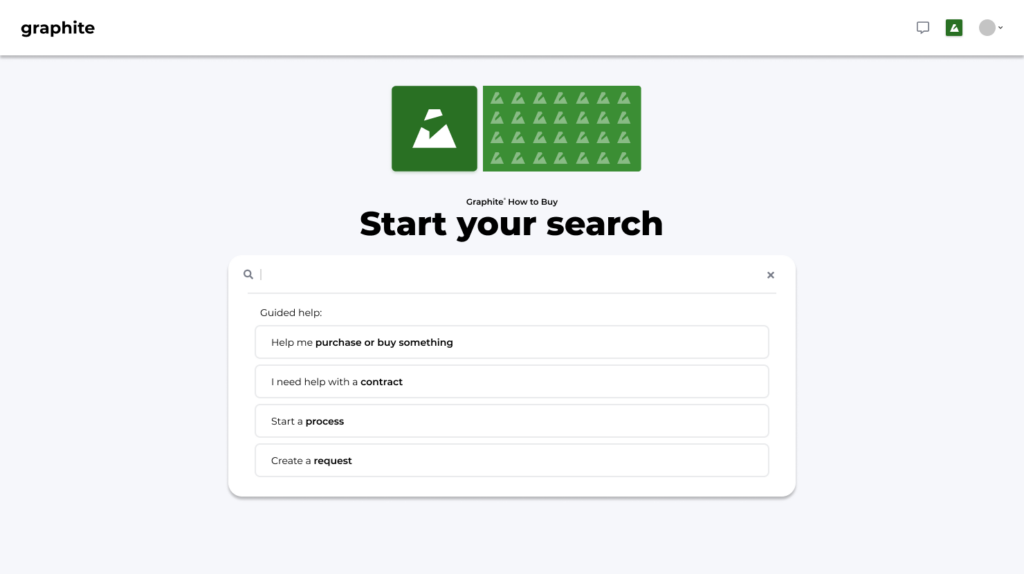
Employees throughout your business will then be empowered to make purchase requests (and even purchases from an approved vendor) for easier, everyday items without bogging down the valuable time of your procurement team.
2. Increase Procurement Efficiency
With employees empowered to quickly request lower tier purchases, your procurement team will have time to spare for other purchasing activities. You’ll be able to move much more quickly through the pile of complicated requests that require more time and energy.
No longer will a smaller purchase requisition create a bottleneck for your business. Instead, your procurement team and finance departments will be able to focus on what they do best–saving your business money on bigger deals.
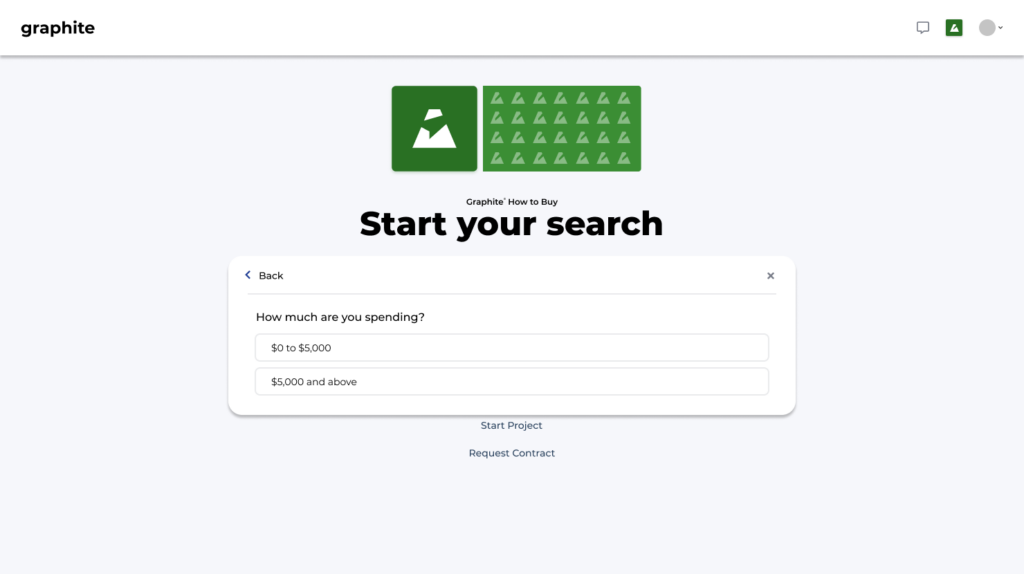
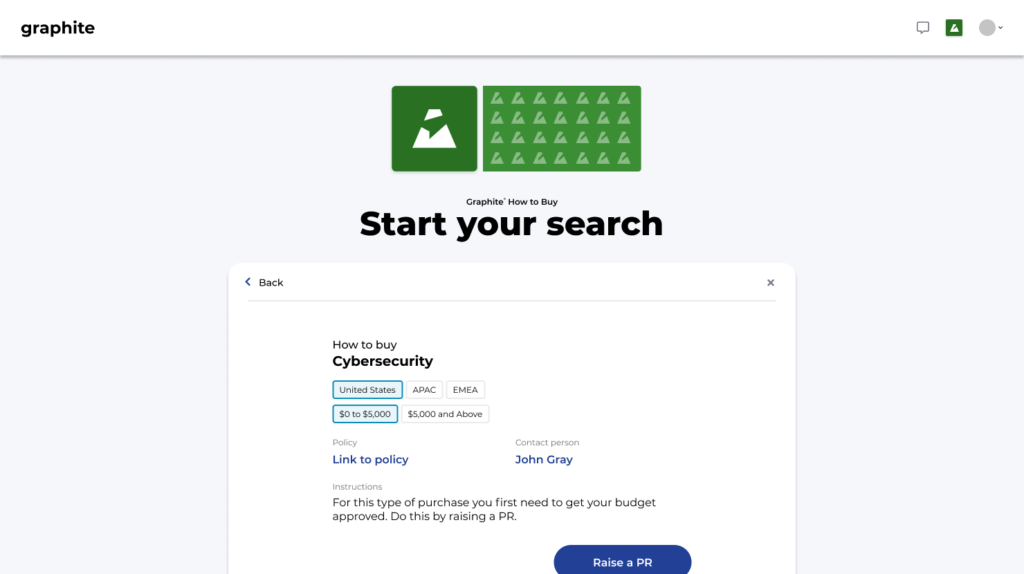
With greater efficiency, you’ll be able to increase your team’s managed spend and prove your real value to the business.
3. Improve Procurement’s Internal Reputation
If your procurement team is struggling to turn purchase requests around quickly, your internal reputation can suffer. Many people see procurement as an annoyance, or another unnecessary step that hinders their ability to do their jobs.
But not your team. With the increased efficiency Graphite’s Guided Intake software offers, your team will be perceived as less of a roadblock and more as a helpful tool. Employees will find the purchase request and procurement process not only seamless and swift, but also advantageous.
Individual employees will have to do much less research on their own before making a purchase order or request, as Graphite allows them to see the options your team has already authorized. They’ll be able to rely on your research rather than performing their own, shortening their own purchase process significantly.
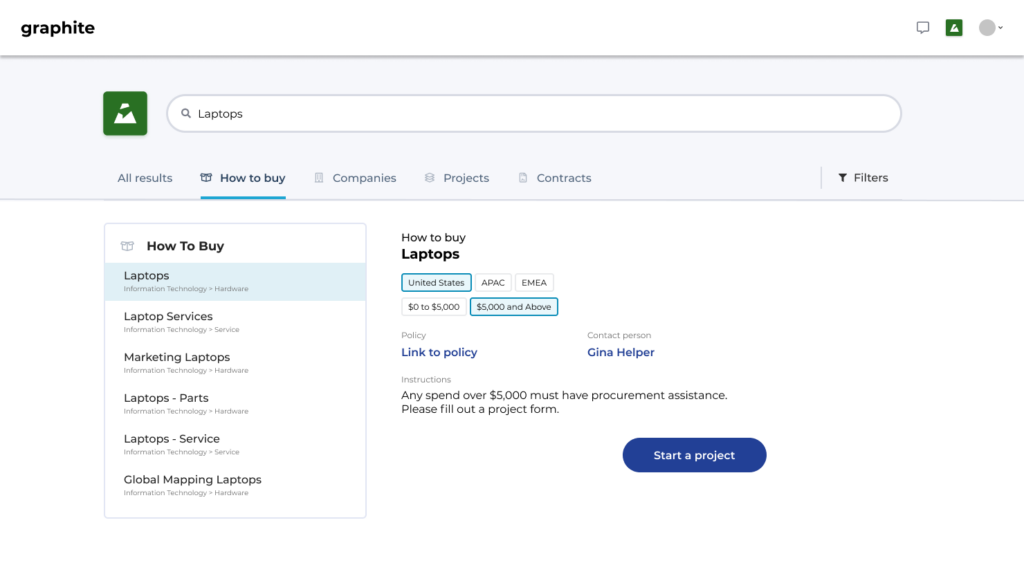
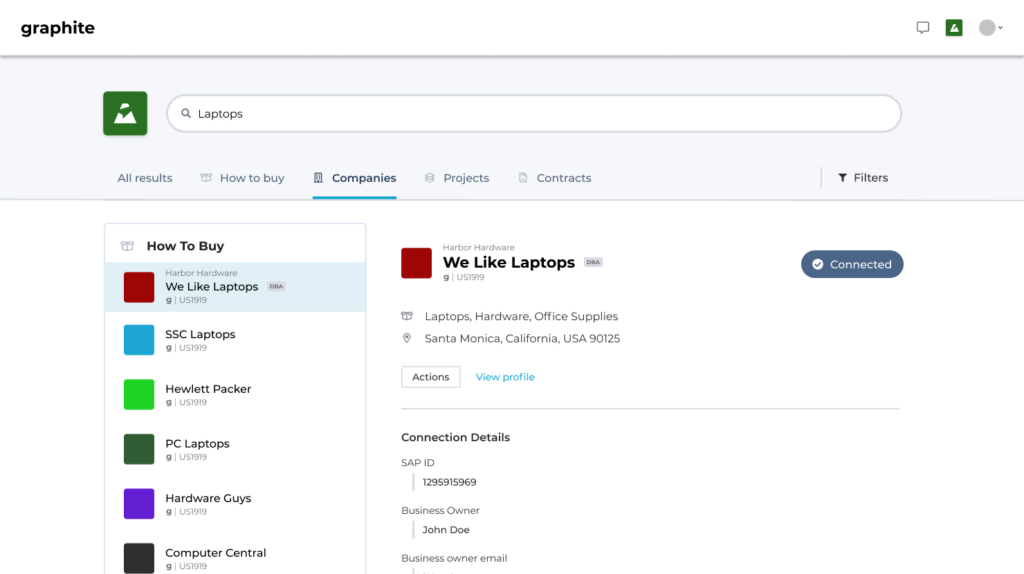
Soon, your team will be seen not as an annoying next step, but as a helpful facilitator in employee’s pursuit to do their own jobs more efficiently.
How Technology Can Help Procurement Spend
Your team plays a key role in your organization’s profitability and overall success. As with almost any other area of the business, technology can increase the productivity of your procurement team, while reducing costs. You can simplify steps such as soliciting bids, creating purchase orders, and tracking supplier performance using procurement software like Graphite Connect that seamlessly integrates with your ERP and other existing systems.
What’s Next?
Ready to simplify and accelerate your entire procurement process? Let Graphite advance your procurement department to the next level and move from obstacle to facilitator with Guided Intake.
Request a Demo